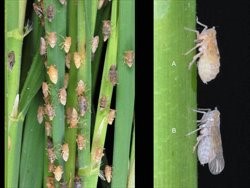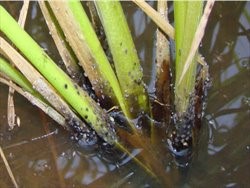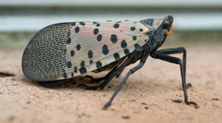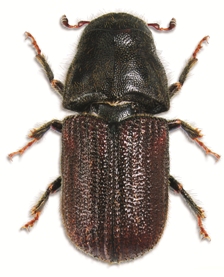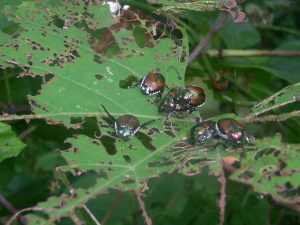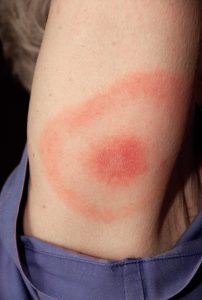 Do you have invasive insects with red strips causing nuisance around your homes?!
Do you have invasive insects with red strips causing nuisance around your homes?!
You might find those as it is spring now.
They are the Boxelder bugs!
At about 1/2-inch long, boxelder bugs are black with three red stripes, vertical edge lines on their bodies, and red lines on the edges of its wings. These markings make it appear its wings form an upside-down V when they are resting with their wings lying flat.
Boxelder bugs are named for their primary host, the boxelder tree. They are one of the destructive agricultural pests. They cause damage to apples, peaches, grapes, strawberries, plums and non-fruiting trees including maple and ash. Boxelder bugs are sap suckers, penetrating plant tissue with their considerable proboscis and using secretions to make it consumable. They almost exclusively feed on the Acer family of maple trees and vines that includes the boxelder and its spinning “helicopter” seed pods but have also been known to feed on fruit during dry summers. Infestations on box elder trees may cause its leaves to yellow and curl or leave spots on stems and new growth. Most trees survive. Damage to grapes, peaches, and other soft fruits is mostly cosmetic, appearing as depressions, sometimes as bruises.
 “They can be a real nuisance,” says Sharon Yiesla, plant information specialist at The Morton Arboretum.
“They can be a real nuisance,” says Sharon Yiesla, plant information specialist at The Morton Arboretum.
They are the much bigger nuisance to homeowners. They seek and enter houses in colonies of hundreds, even thousands of insects as cold weather approaches, congregating in walls and warm basements, making themselves at home all through winter and occasionally emerging into kitchens, living rooms, bedrooms, and other human-inhabited spaces. Indoors, the bugs can be a major problem.
Warm weather or an increase in home heating may convince individual boxelder bugs that spring has arrived and they will enter a family’s living space in search of a way outside. In late summer and autumn, when they gather in groups much like swarms of bees on the sun-facing, preferably white side of homes and garages where their sheer numbers will discolor the building’s side is allowed to stay.
“They’re strictly a plant feeder. If they find a little place to get behind the wall, then they’ll eventually hunker down for months,” says Whitney Cranshaw, a professor of Entomology at CSU.
You can see how the home-owners from Mid-Michigan are troubled by these pests!
Boxelder bugs invading Mid-Michigan homes this fall
Posted: Thu 8:52 AM, Oct 19, 2017, |
EAST LANSING, Mich. (WILX)- It does not just stink bugs, but boxelder bugs are also invading homes as well this fall. Researchers at Michigan State University say the bugs are trying to find shelter for the winter.
According to the bug experts, the boxelder bugs invade homes during the fall looking to stay in attics for the winter. You might have noticed clusters of them on the south and west sides of homes where they congregate in the warm autumn sun. While the bugs can be annoying, they are considered harmless and a nuisance. They do not bite, lay eggs in homes, eat fabrics, or get into stored foods.
Researchers say one of the best ways to stop them from coming inside, is to remove any female boxelder trees on your property if possible. Sealing exterior cracks and holes with caulk can also greatly reduce the number of bugs inside your home.
Once the bugs get inside, experts say it is hard to get them out. They say even aggressive and costly insecticide applications may not be effective because it is nearly impossible to treat every hidden area that may be harboring the insects. A vacuum cleaner can help remove the sluggish bugs.
They have caused nuisance in more homes from North York as well.
Swarms of boxelder bugs cover homes in North York and Etobicoke
There is a notable boom of boxelder bugs in Toronto this year, but experts say they’re harmless
By Laura DaSilva, CBC News Posted: Oct 08, 2016
Nelia Teves can’t walk into her North York house without a handful of black and red cockroach-esque critters flying in behind her.
“Our entire neighborhood is covered in them,” Teves said.
She reached out to CBC News to find out what they are and whether she should be worried.
It turns out, they’re more of an annoyance than a threat. They’re called boxelder bugs and they’re known as “nuisance pests.”
Pest control methods have been used to stop the menace the caused by Box-elder bugs. But those methods did not work to stop the nuisance caused by these pests. The homeowners have tried different sprays and electronic devices to stop the menace, but they could not get rid of these pests.
To stop the nuisance caused by these bugs there is a need for an effective solution and C Tech Corporation has one!
The unique product Combirepel™ manufactured by C Tech Corporation is an anti-insect aversive which repels insects.
Combirepel™ is available in the form of the masterbatch, which can be incorporated into the polymeric applications like wires and cables, pipes, agricultural films etc. to keep the boxelder bugs at bay.
The product available in the form of liquid concentrate can be mixed in paints in a predetermined ratio and lacquer which can be applied topically to the applications.
To keep the insects at the bay Combirepel™ lacquer can be sprayed or coated on the tree trunks.
The product is also effective against a multitude of other insects and pests like beetles, mayflies, thrips, aphids, etc. The repelling mechanism of the product would ward off the boxelder bugs and other insects that could cause damage. Thus, using Combirepel™ would effectively ensure that the area around us remain safe and protected from the pests for a long period of time.
Combirepel™ is thermally stable and does not degrade on exposure to heat and sunlight. It does not kill or harm the insect but repels them. It does not volatilize and does not degrade the soil. It is RoHS, RoHS2, ISO, REACH, APVMA, NEA compliant and FIFRA exempted.
Why resort to killing when we can just repel them!?
Our product works on the mechanism of repellency. It temporarily inhibits the mating cycle of the insects. The product impairs the ability of the insects to reproduce, that is the insects will not lay eggs or the laid eggs will be infertile. The product causes feeding disruption in an insect by triggering an unpleasant reaction within the insect which might try to feed on the application. The product temporarily blocks the reproduction system of the insects by hindering the release of the vital hormones for growth.
In such a way the insects can be repelled and the damage caused by them can be prevented without killing them.
Contact us at technical.marketing@ctechcorporation.com to keep the pests away.
Also, visit our websites:
http://www.ctechcorporation.com/
http://www.rodrepel.com/
http://www.termirepel.com/
http://www.combirepel.com/
Follow our Facebook pages at:
1] https://www.facebook.com/Combirepel-411710912249274/
2] https://www.facebook.com/Termirepel-104225413091251/
3] https://www.facebook.com/Rodrepel-120734974768048/
Follow us on our Twitter pages at:
1] https://twitter.com/rodrepel
2] https://twitter.com/termirepel
3] https://twitter.com/combirepel





